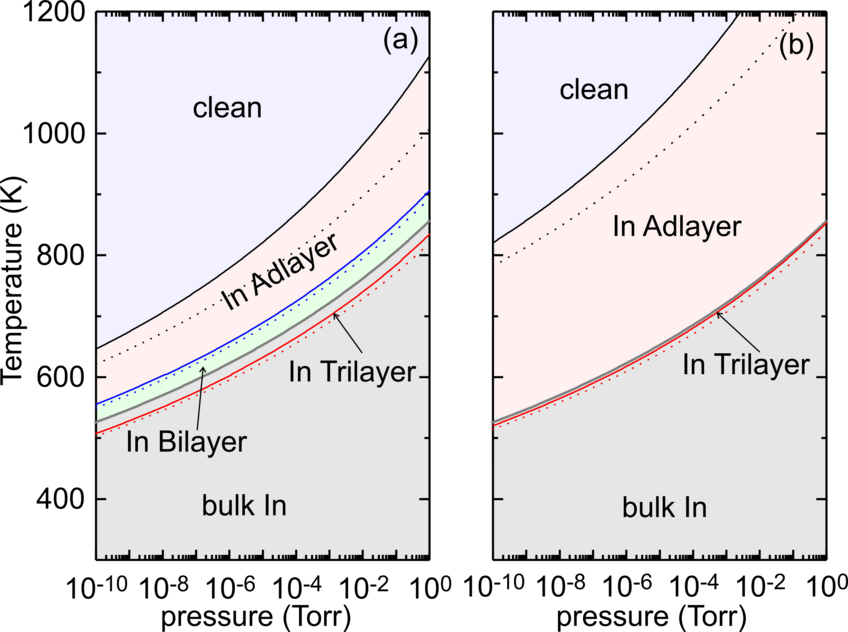Growth of high In content InGaN alloys
The growth of high In content InGaN alloys with sufficiently high crystal quality constitutes a puzzling situation where the complex interplay between surface morphologies, partial pressures and growth temperature plays a central role. We have investigated the bulk and surface thermodynamics of InxGa1-xN growth for the technologically relevant (0001) and (0001) growth planes by means of density functional theory calculations.
Our calculations reveal that chemical effects (i.e. stronger Ga-N as compared to In-N bonds) result in a strong driving force for In surface segregation in the (0001) growth. Furthermore, the thermal stability of excess indium is found to be remarkably higher on N-polar surfaces than on the Ga-polar surfaces, indicating that for a given level of In incorporation, higher temperatures can be used for N-polar growth as compared to Ga-polar growth.
We have furthermore investigated the thermodynamics of solid and gas phases in molecular beam epitaxy like growth conditions and we highlighted the effect that plasma discharges have on the critical temperatures for InGaN decomposition: The weaker binding of the active nitrogen species produced by plasma as compared to ground state molecular nitrogen shifts the equilibrium and thus the maximum allowed growth temperatures to ≈500 K higher values. However, the aforementioned temperatures have to be decreased by ≈100 K for every 25% InN added to the InGaN alloy.

